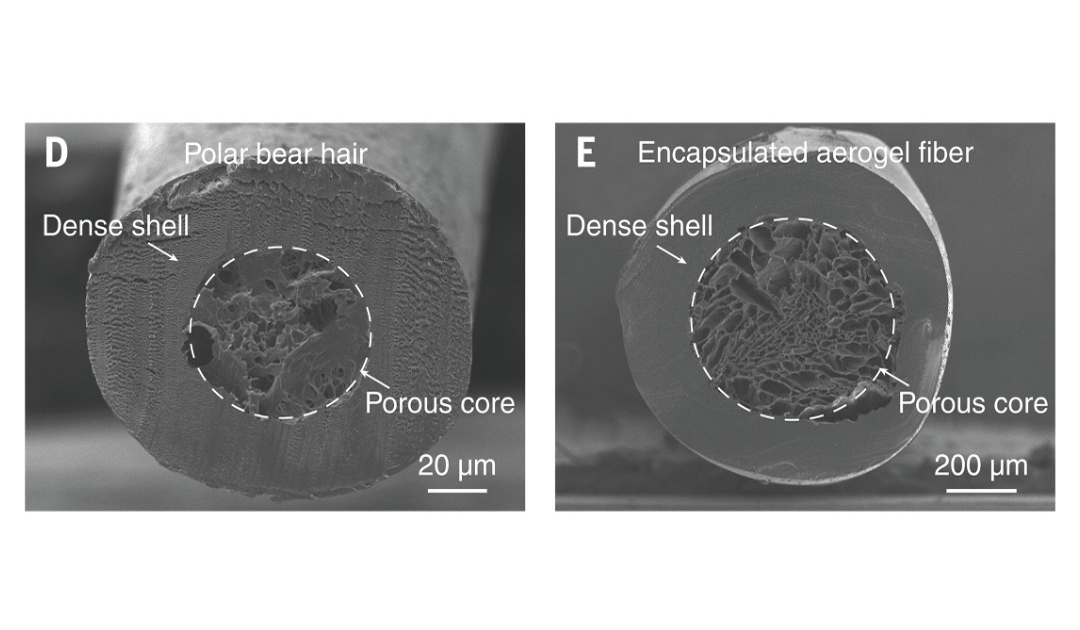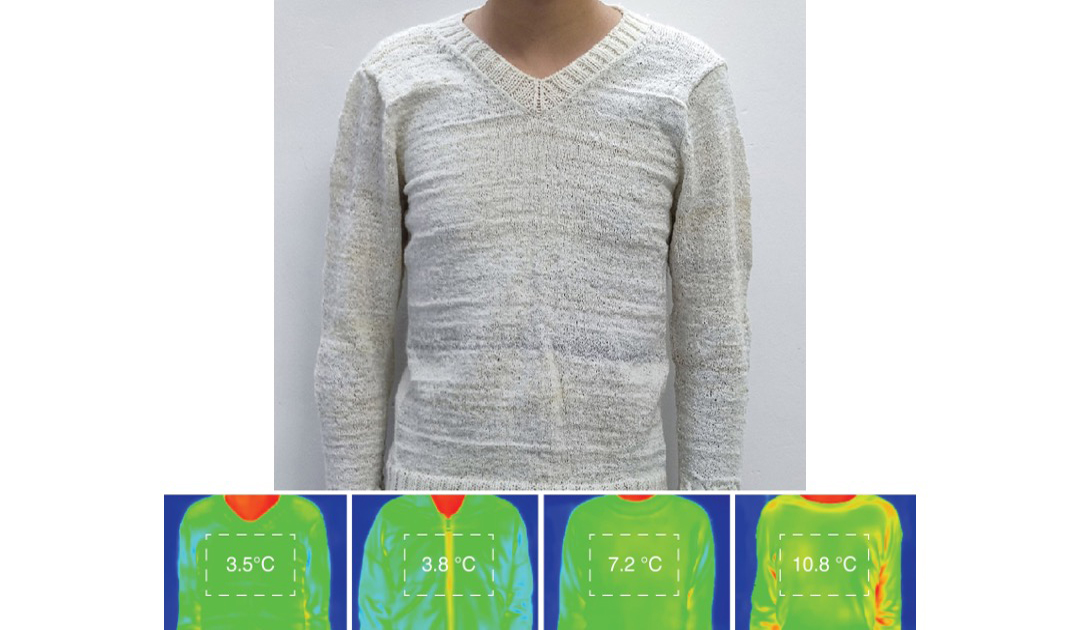
Aerogels are considered the world’s best thermal insulators. This very light synthetic material, used for building insulation among other things, can now be used to make clothing for extreme cold, thanks to a team of Chinese researchers who drew inspiration from polar bear fur to develop a new textile fiber.
A fiber that mimics polar bear fur, as warm as a down jacket and one-fifth the thickness – that’s the material recently developed by a team of Chinese researchers. Their study, published on December 21 in the journal Science, unveils a fiber made from aerogel, a very light, heat-retaining synthetic material.
Aerogels are the world’s best thermal insulation materials. However, they are ill-suited to garment manufacture. Extremely brittle and fragile, they are impossible to weave. Another problem is that they lose their insulating properties when washed or in damp environments.

To overcome the limitations of aerogel and make it suitable for use in clothing, researchers took inspiration from polar bear fur.
To withstand the freezing temperatures of the Arctic, the polar bear is equipped with a two-layer fur. The first layer is made up of long, stiff, hollow hairs, while the second layer, close to the skin, is a dense down.
For the research team, the first layer was the inspiration for developing an aerogel textile yarn. “Polar bear hairs have a porous core and dense shell structure to prevent heat loss. These structural features decouple the thermal insulation function and mechanical strength of the hair, which provided the inspiration for our design and preparation of the synthetic fibers.”, the researchers explained in their article.

The researchers then encapsulated aerogel fibers in a synthetic shell made of thermoplastic polyurethane, known for its strength and elasticity, thus obtaining a flexible textile fiber without sacrificing thermal insulation properties. The scientists then knitted a sweater using these newly created encapsulated aerogel fibers (EAF).
To verify the insulating power of their creation, they then carried out comparative tests on a volunteer dressed in different garments (EAF sweater, down jacket, cotton sweater and wool sweater) and locked in a cold chamber at -20°C. The scientists measured the surface temperature of each garment. While the cotton sweater, the least insulating, showed a surface temperature of 10.8°C (translating into body heat loss), the aerogel sweater showed a mere 3.5°C. The result is comparable to that of a down jacket (3.8°C), but five times thinner. And even after washing, the encapsulated aerogel fiber retained its thermal insulation properties.

However, whenever you’re a polar fashionista or someone who hates to be cold, don’t be too quick to rejoice at these promising results. Clothing made from encapsulated aerogel fiber is unlikely to find its way into the windows of major clothing shops or sports stores any time soon. The creation of this fiber requires a great amount of time and energy before it can be marketed, and is therefore particularly expensive. Although the researchers behind this technology are still working on the problem, encapsulated aerogel fiber is expected to find its first use in military or space technical clothing.
Mirjana Binggeli, PolarJournal
More on the subject





